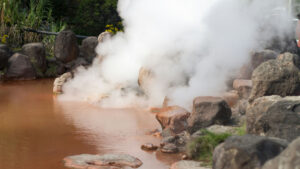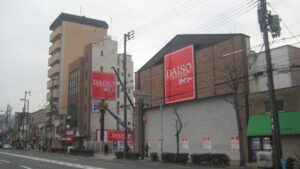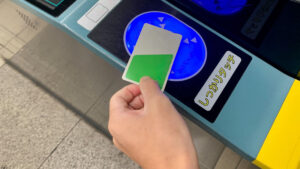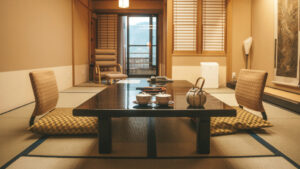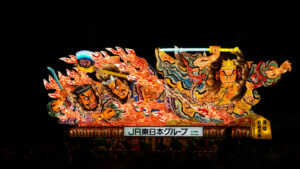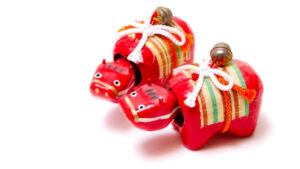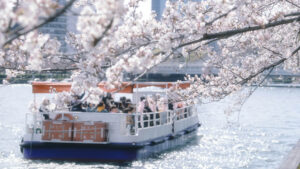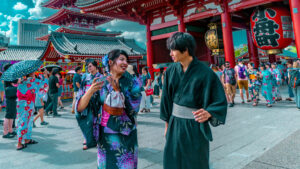Japan’s largest discount store, Don Quijote (aka Donki), often operates 24 hours, offers Tax-Free shopping for visitors, and boasts a massive selection—making it a traveler’s best friend.
In this article, we’ve handpicked a fail-safe list of 50 items across categories—snacks, instant foods, seasonings, Japanese tea, cosmetics, health & hygiene, bath & fragrance, household goods, stationery, and gadgets. Each pick includes a quick note on ballpark prices, carry-home rules (liquids/batteries), and allergen labeling, so you can use this as a practical, in-store checklist.
Start with the “How to Master Donki” guide to learn tax-free procedures, how to avoid crowds, and how to use coupons. Then browse each category by purpose. We focus on individually wrapped, lightweight, and durable items— a list that also makes suitcase weight management easier.
Note: Prices, availability, and packaging vary by store and season. Be sure to check the import regulations of your destination country in advance (e.g., restrictions on meat, dairy, alcohol, batteries, and liquid quantities).
Contents
- 1 How to Master Donki: Pro Shopping Guide
- 1.1 Tax-Free (Duty-Free) Procedures & Required Documents
- 1.2 Payment Methods (Cards/QR/Foreign Currency) & Receipt Management
- 1.3 When to Avoid Crowds & How to Navigate the Store
- 1.4 How to Read Price Tags & Promo POPs + Use Coupons
- 1.5 Air Travel Rules for Liquids & Battery Items
- 1.6 Sizing, Stock Checks & Holds
- 2 Snacks & Sweets (5)
- 3 Instant & Ready-to-Eat Foods (5)
- 4 Seasonings & Rice Toppers (5)
- 5 Japanese Tea & Drink Powders (5)
- 6 Beauty & Cosmetics (5)
- 7 Health & Hygiene (5)
- 8 Bath & Fragrance (5)
- 9 Home Goods, Kitchen Tools & Gadgets (5)
- 10 Stationery, Hobbies & Characters (5)
- 11 Electronics & Travel Gadgets (5)
- 12 Bring Japan Home the Smart, Money-Savvy Way with Donki
How to Master Donki: Pro Shopping Guide
Tax-Free (Duty-Free) Procedures & Required Documents
- What you need: Your original passport (no copies). Keep your entry stamp or digital entry record ready to show.
- Who’s eligible: Short-term visitors to Japan. You typically combine purchases made on the same day at the same store for tax-free processing.
- Where to process: Go to the counter marked “TAX FREE” near the registers. The usual flow is pay first → tax-free paperwork.
- Packing rules: Consumables may be sealed in tamper-evident bags. Do not open them until you leave Japan.
- Keep your receipts: Retain all forms and receipts from the tax-free process until departure.
- Notes: Some items (e.g., services, certain foods) are not eligible. Confirm before you check out.
Payment Methods (Cards/QR/Foreign Currency) & Receipt Management
- Plenty of options: Credit/debit cards, transit IC, various QR payments (PayPay/Alipay/WeChat, etc.); some stores also accept foreign currency.
- How to get the best price: Check app member prices, coupons, bundle deals, and tags that say “discount at register”.
- Currency & fees: If paying with foreign cash, confirm accepted currencies, exchange rate, and change policy at the counter.
- Avoid DCC: When paying by card, choose to be charged in the local currency (JPY) to reduce extra fees where applicable.
- File your receipts: Keep tax-free and regular receipts separately to simplify returns and airport checks.
- Receipt name: If needed, ask for the receipt in your passport name—useful when buying business gifts.
- Best times: Weekday mornings to early afternoon, or late night at 24-hour stores. Weekend evenings are typically crowded.
- Fastest route: Check the floor map right after entering and hit priority categories first (e.g., snacks → cosmetics → electronics).
- Out-of-stock workarounds: Popular items may be staged near restock carts or endcaps. Also scan aisle ends.
- Test buys: For sizes/flavors, start with small packs. If you like them, grab more on the same floor in one go.
- Two-basket method: Use one basket for “keepers” and another for “maybe” items to speed up checkout.
- Divide & conquer: Split areas with travel companions and coordinate via messages for maximum efficiency.
How to Read Price Tags & Promo POPs + Use Coupons
- Tax-inclusive vs. tax-exclusive: Check whether the price is listed as tax-in or tax-out. For tax-free purchases, the tax-exclusive price is often the basis.
- “Discount at register”: The shelf price won’t change; the discount is applied during checkout.
- Member pricing: Items marked with an app/member icon may be cheaper when you show the app.
- Multi-buy offers: Deals like “¥Y for X items” or “X% off the 2nd item” may require the same barcode.
- Limited stock: Signs like “while supplies last / limit X per person” indicate popularity or end-of-line—grab it when you see it.
- Coupon flow: In the official app, select your store before shopping to load available coupons, then start your rounds.
Air Travel Rules for Liquids & Battery Items
- Liquids in cabin: Containers ≤100 ml inside a ≤1 L zip bag. Check volumes for toner, eye drops, and perfume.
- Aerosols: Confirm airline/route rules in advance; caps are typically required.
- Batteries & power banks: Spare lithium batteries go in carry-on only. Verify the Wh rating.
- Voltage: Japan is 100 V. Devices without 100–240 V support need a transformer.
- Blades & flammables: Rules for nail clippers, razors, and lighters vary—check your airline’s policy.
- Sealed tax-free bags: Do not open until you leave Japan, or the purchase may become taxable.
Sizing, Stock Checks & Holds
- Try before you buy: Ask staff about fitting rooms for clothing/hats. Check cosmetic testers under both indoor and natural light.
- Note model codes: Save model/color codes on your phone to speed up stock checks.
- Nearby inventory: Ask staff to check nearby stores; transfers or special orders may be possible within the chain.
- Holds: Short-term holds are sometimes available even for travelers—set a clear pickup time.
- Size standards: Japanese sizes (S/M/L) differ from overseas; shoe sizes are shown in cm.
- Fragile goods check: For gadgets and glass bottles, request a quick function/damage check at the register and grab some padding.
Snacks & Sweets (5)
1. Matcha KitKat
Quick intro: Matcha KitKat – Japan-exclusive green tea chocolate.
Why it’s great: A can’t-miss Japanese flavor. Individually wrapped, perfect for sharing.
Variations: Deep matcha, hojicha, regional editions; seasonal packaging is also popular.
Typical price: Small bag (10–14 pcs) ¥600–¥1,200 / Large bag (20–40 pcs) ¥800–¥1,800.
Storage & carry: Melts easily in heat—insulate with clothing in your suitcase; use an ice pack in summer.
Allergens/notes: Milk, wheat, soy. Vegetarian-friendly for some, but not fully vegan.
2. Black Thunder
Quick intro: Cocoa cookie & rice-puff chocolate bar.
Why it’s great: Crunchy and excellent value; ideal for bulk gifting to coworkers and friends.
Variations: Mini, Big, Peanut, and limited flavors.
Typical price: Single ¥40–¥60 / Mini multipack (10–20 pcs) ¥300–¥600.
Storage & carry: Same melt precautions as KitKat; less prone to breaking—fine in the lower suitcase layer.
Allergens/notes: Milk, wheat, soy; peanuts depending on flavor.
3. Kaki-no-Tane (with Peanuts)
Quick intro: Soy-sauce rice crackers with peanuts.
Why it’s great: A savory (not sweet) snack. Mini packs pair well with drinks and are easy to share.
Variations: Wasabi, plum, extra-spicy, cheese; peanut-free versions also exist.
Typical price: Multipack (6–12 mini bags) ¥300–¥700.
Storage & carry: Sensitive to humidity—finish soon after opening; low odor on planes.
Allergens/notes: Wheat, soy, peanuts. Warn recipients about spicy flavors.
4. Umaibo Variety Pack
Quick intro: Assorted Japanese corn puffs (stick-shaped).
Why it’s great: Huge flavor lineup (corn potage, mentaiko, cheese, etc.). Eye-catching packs—great for kids.
Variations: ~30-stick assortments, single-flavor packs, regional designs.
Typical price: Assortments (20–30 sticks) ¥300–¥600.
Storage & carry: Fragile—boxed versions travel better; cushion with clothing.
Allergens/notes: Wheat, milk, soy, egg (varies by flavor). Some flavors are not vegetarian.
5. Pocky (Seasonal Flavors)
Quick intro: Chocolate-coated biscuit sticks with seasonal, Japan-only flavors.
Why it’s great: Global favorite with Japan-exclusive options (sakura, purple yam, rich matcha). Slim boxes pack flat.
Variations: Ultra-thin, premium/luxe lines, regional (strawberry, Uji matcha); many are individually wrapped.
Typical price: Regular box ¥150–¥350 / Limited or gift boxes ¥400–¥1,200.
Storage & carry: Pack alongside flat items to prevent breakage; beware of heat in summer.
Allergens/notes: Wheat, milk, soy. Check labels for nut-flavored varieties.
Instant & Ready-to-Eat Foods (5)
6. Cup Noodles (Regional & Limited Editions)
Quick intro: Cup Noodles – Japan-only flavors you can’t find back home.
Why it’s great: Tons of regional/seasonal varieties (sukiyaki, seafood, dandan, etc.). Lightweight and hard to break.
Variations: Standard / BIG sizes, soupless (mazemen-style), low-carb or high-protein lines.
Typical price: ¥120–¥320 each / Limited editions ¥180–¥420.
Prep & carry: Add boiling water, 3 minutes. Carry-on OK (dry goods), but once prepared the broth counts as liquid—don’t open before security.
Allergens/notes: May contain wheat, egg, milk, and pork/chicken/seafood stocks. Many are not halal/vegan—check labels.
7. Donbei / Akai Kitsune & Midori no Tanuki
Quick intro: Japanese udon & soba bowls with classic dashi broth.
Why it’s great: Taste the difference between Kanto/Kansai-style dashi—a uniquely Japanese flavor experience.
Variations: Kitsune (sweet fried tofu) / Tanuki (tempura bits), regional editions, spicy, shrimp tempura add-ins, etc.
Typical price: ¥130–¥300 each; multi-packs are even better value.
Prep & carry: Boiling water for about 5 minutes. Lightweight and sturdy—place near the top of your suitcase.
Allergens/notes: Wheat, (some include) buckwheat, soy; uses lots of seafood-based dashi (bonito/kelp).
8. Freeze-Dried Miso Soup Assortments
Quick intro: Instant freeze-dried miso soup—just add hot water.
Why it’s great: Light, compact, and individually wrapped. Keeps good texture; perfect for sharing.
Variations: Tofu, wakame, nameko, aosa; reduced-salt versions; different dashi bases (bonito, niboshi, kelp).
Typical price: 6–12 servings ¥350–¥900 / Gift boxes from ¥1,000.
Prep & carry: Add 150–180 ml hot water. Sensitive to humidity—pack in a zipper bag. Carry-on OK (dry powder).
Allergens/notes: Soy; often includes seafood dashi. For vegetarian options, look for labels like “no animal-derived ingredients.”
9. Retort-Pouch Japanese Curry (Famous Shops & Regional)
Quick intro: Ready-to-eat Japanese curry inspired by renowned restaurants and regions.
Why it’s great: Huge variety—chef-supervised, wagyu, spicy styles, regional specialties—shelf-stable and long-lasting.
Variations: Mild to extra hot; butter chicken, keema, beef, vegetable; Hokkaido, Kobe, and more.
Typical price: ¥150–¥600 per pouch / Premium ¥700–¥1,200.
How to eat & carry: Heat in boiling water ~5 minutes or microwave-ready. Counts as a liquid: no carry-on—put in checked baggage.
Allergens/notes: Wheat, milk, and meat-derived ingredients (beef/pork/chicken). Check your destination’s import rules (meat extracts, etc.). Look for veg/gluten-free labels where applicable.
10. Okonomiyaki / Takoyaki Mix
Quick intro: DIY flour mixes for Japanese savory pancakes and octopus balls—great for home parties.
Why it’s great: Many sets include sauce & toppings; easy to recreate in overseas kitchens.
Variations: Dashi-added flour, airy yam-blend versions, gluten-reduced options, sets with sauce/green laver/bonito flakes.
Typical price: Flour ¥200–¥500 / Full sets ¥500–¥1,200.
Prep & carry: For okonomiyaki, add egg, water, chopped cabbage. Takoyaki is best with a dedicated plate (or use a mini pancake pan). Bottled sauce goes in checked baggage.
Allergens/notes: Wheat, egg, and sometimes seafood powders (bonito, squid). Some sauces contain animal-derived ingredients—check labels.
Seasonings & Rice Toppers (5)
11. Kewpie Mayonnaise (Japan Spec)
Quick intro: Kewpie Mayo – Japan’s yolk-rich, umami-packed mayonnaise.
Why it’s great: Yolk-forward with an excellent balance of richness and tang. Versatile for sandwiches, sushi rolls, and salads.
Variations: Original / Karashi mustard / Wasabi / Calorie-cut; bottle sizes from small to large.
Typical price: 350–500 g ¥250–¥450 / mini packs ¥100–¥200.
How to use: Egg salad sandwiches, potato salad, okonomiyaki drizzle, a touch in teriyaki sauce.
Carry-home: Counts as a liquid → generally no carry-on (volume). Pack in checked baggage with double-bagging and tape to prevent leaks.
Allergens/notes: Egg, soy. Refrigerate after opening. Not suitable for vegetarians/vegans.
12. Hondashi (Instant Dashi Granules)
Quick intro: Hondashi – instant bonito stock granules.
Why it’s great: Dissolve for authentic dashi in seconds—perfect for miso soup, simmered dishes, or udon broth. Lightweight and long shelf life.
Variations: Bonito; bonito + kombu; reduced-salt; single-serve sticks.
Typical price: Small box ¥200–¥450 / Large box ¥400–¥900.
How to use: Start with a pinch (≈⅛–¼ tsp per cup) and adjust; great as a hidden umami boost in stir-fries.
Carry-home: Powder → carry-on OK. Shield from humidity in a zipper bag.
Allergens/notes: Fish (bonito), soy. Most versions are not vegetarian/halal.
13. Yuzu-kosho & Shichimi Togarashi
Quick intro: Yuzu-kosho (citrus chili paste) & Shichimi (seven-spice blend).
Why it’s great: A tiny amount adds aroma + heat. Works with noodles, yakitori, steak, even pasta.
Variations: Yuzu-kosho in green (fresh) or red (hotter); shichimi blends emphasizing sansho or sesame.
Typical price: Yuzu-kosho tube ¥200–¥500 / Shichimi mini bottle ¥100–¥300.
How to use: Add from a rice grain–size up to ¼ tsp to soup or ramen; mix with mayo for a quick dip.
Carry-home: Yuzu-kosho is a paste (liquid) → better in checked baggage. Shichimi (powder) → carry-on OK.
Allergens/notes: Shichimi often contains sesame; factories may handle peanuts. Spicy—consider recipients’ tolerance.
14. Furikake (Noritama / Yukari)
Quick intro: Furikake—rice toppers (Noritama: seaweed + egg / Yukari: red shiso).
Why it’s great: Many are individually wrapped for sharing. Great on rice—also tasty on pasta, popcorn, and salads.
Variations: Noritama, Yukari, salmon, bonito, wasabi, and more.
Typical price: Bottle/bag ¥120–¥300 / mini-pack assortments ¥200–¥500.
How to use: About 1 tsp on rice; try butter–soy + Noritama for pasta, or Yukari + olive oil as a dressing.
Carry-home: Carry-on OK. Keep sealed to avoid humidity.
Allergens/notes: Noritama may include egg, milk, soy, sesame, fish extracts. Yukari is often more veg-friendly—check ingredients.
15. Mentsuyu & Shiro-dashi
Quick intro: Mentsuyu (noodle soup base) & Shiro-dashi (light, pale stock).
Why it’s great: Just dilute to make udon/soba broth, tempura dip, donburi sauce, or simmered dishes—ideal for beginners.
Variations: 2x/3x concentrates; low-sugar; kombu-forward; pale shiro-dashi. Powdered types also exist.
Typical price: 500 ml mentsuyu ¥180–¥450 / 500 ml shiro-dashi ¥300–¥700.
How to use: For cold dipping sauce, mentsuyu:water = 1:2–3. For simmered dishes, start with 1–2 tsp of shiro-dashi. Adds depth to tamagoyaki.
Carry-home: Liquids → checked baggage. Wrap glass bottles with paper + double bags. Powdered mentsuyu is carry-on OK.
Allergens/notes: Wheat, soy, seafood dashi. Some contain mirin-derived alcohol—for halal/abstainers, pick powder or verify labels.
Japanese Tea & Drink Powders (5)
16. Matcha/Hojicha Latte Sticks
Quick intro: Matcha/Hojicha latte sticks – café-style tea in seconds.
Why it’s great: Just dissolve in hot water or milk. Individually wrapped for easy sharing, with options from lightly sweet to richly sweet.
Variations: Sweetened/unsweetened, low-calorie, soy-latte style, collagen-added, iced versions.
Typical price: 5–10 sticks ¥200–¥600 / 20–30 sticks ¥500–¥1,200.
Prep & carry: Dissolve in 120–150 ml hot water. For iced, add milk and ice. To prevent clumps, make a paste with a little hot water first. Powder = carry-on OK.
Allergens/notes: Some contain dairy and/or soy. Vegans should choose dairy-free types.
17. Green Tea / Hojicha Tea Bags
Quick intro: Sugar-free, authentic Japanese green/roasted tea in tea bags.
Why it’s great: No sugar and individually wrapped to preserve aroma—great as souvenirs.
Variations: Sencha, gyokuro blends, genmaicha, decaf, and high-extraction pyramid/mesh bags.
Typical price: 20–50 bags ¥200–¥700 / premium or single-origin ¥800–¥1,500.
Brew & carry: Green tea: 70–80 °C for 1–2 min. Hojicha: 90–95 °C for 30–60 sec. Cold brew: 2–4 bags per 1 L in the fridge overnight. Lightweight = carry-on OK.
Allergens/notes: Generally none. Caffeine is higher in green tea than in hojicha.
18. Barley Tea Packs (Mugicha)
Quick intro: Caffeine-free Japanese summer staple.
Why it’s great: Zero caffeine, gentle enough for kids and bedtime; toasty, easy-drinking flavor.
Variations: Cold-brew or boil-brew types, stronger roast, Japanese barley blends, value bulk packs.
Typical price: 30–54 bags ¥200–¥500.
Brew & carry: Cold brew: 1–2 bags per 1 L for 1–2 hours. Boil: 1–2 bags in 1–2 L for 3–5 minutes, then cool. Powders/tea bags = carry-on OK.
Allergens/notes: Contains barley (gluten)—use caution if sensitive. Store brewed tea in the fridge and consume within 1–2 days.
19. Instant/Culinary Matcha (Also for Baking)
Quick intro: Fine matcha powder for drinks, baking, and desserts.
Why it’s great: Ultra-fine and versatile—great for lattes, smoothies, cookies, cakes, and ice cream.
Variations: Culinary grade, stick packs, sweetened types, instant green tea blends that dissolve easily.
Typical price: 20–40 g ¥300–¥1,000 / higher grades ¥1,500+ / 10-stick sets ¥200–¥500.
How to use & carry: Sift to prevent lumps. For drinks, make a paste with a little hot water, then dilute. For baking, replace 2–4% of flour with matcha. Powder = carry-on OK; seal well and double-bag to avoid color transfer.
Allergens/notes: Generally none. Check labels for sweetened or dairy-mix products.
20. Sports/Electrolyte Drink Powders & ORS
Quick intro: Electrolyte/sports drink powders and oral rehydration salts (ORS) for quick hydration.
Why it’s great: Perfect for Japan’s humid summers, jet lag, and long travel days. Stick packs are highly portable.
Variations: Isotonic (sports) / hypotonic (ORS), effervescent tablets, sugar-free electrolyte powders.
Typical price: Sports drink sticks (10–20) ¥300–¥800 / ORS sticks (5–10) ¥400–¥900.
Prep & carry: Dissolve one stick in 200–500 ml (or ~500 ml per product directions). Powder = carry-on OK.
Allergens/notes: Some products are high in sodium. Those with hypertension or kidney issues should follow medical advice. Check for preferred sweeteners (with/without artificial sweeteners).
Beauty & Cosmetics (5)
21. LuLuLun Hydra EX Mask
Quick intro: A next-generation aging care mask that features Exosomes × White Glutathione to help your skin feel renewed and resilient.
Why it’s great: Japan’s sheet-fit technology plus a rich moisturizing essence—ideal for dryness during travel. Individually wrapped packs are perfect for gifting.
Variations: ~7-sheet individual sets / large boxes; lines focused on moisture or clarity/brightness.
Typical price: 7 sheets ¥500–¥1,200 / large (28–36 sheets) ¥1,200–¥2,500.
How to use & tips: After cleansing and toner, apply for 10–15 min. Smooth leftover essence onto neck & hands. Chill the pack before use to calm roughness.
Carry-home: Contains liquid—place in a 1 L clear zip bag for cabin. Buy in bulk → checked baggage recommended.
Notes: Patch test for sensitive skin. Check fragrance/preservative listings.
22. CANMAKE Creamy Touch Liner
Quick intro: A cult-favorite gel eyeliner with an ultra-smooth texture that glides effortlessly.
Why it’s great: 1.5 mm ultra-fine tip with a melt-on contact feel—easy tightlining. Budget-friendly with strong payoff.
Variations: Black/Brown families (red-/yellow-leaning), limited shades, waterproof.
Typical price: ¥500–¥900.
How to use & tips: Dot between lashes and connect; you can smudge with a cotton swab while still fresh.
Carry-home: Gel formula may count as liquid—place in a clear pouch for carry-on.
Notes: Keep the waterline area clean. Remove with an eye makeup remover.
23. KATE Lip Monster
Quick intro: A best-selling lipstick that delivers vivid color with impressive lasting power.
Why it’s great: Known for long wear (often survives eating/drinking; results vary). Huge shade range from edgy to everyday.
Variations: Core + limited shades, mini sizes, and different finishes.
Typical price: ¥1,200–¥1,600.
How to use & tips: Apply 2–3 thin layers for better adherence; add extra to the center for a gradient.
Carry-home: Stick format has minimal liquid—carry-on OK (store in a clear pouch).
Notes: If staining concerns you, use a lip base and remove thoroughly.
24. excel Skinny Rich Shadow
Quick intro: An adult-favorite palette with elegant, usable shades and no “throwaway” colors.
Why it’s great: Four-pan palettes with no dud shades—easy depth and definition. Silky texture fits office to travel looks.
Variations: Shade sets from beige to mauve tailored to different skin tones.
Typical price: ¥1,300–¥1,800.
How to use & tips: Upper-left over the entire lid; lower-right along the lashline. Mirror the same shade on the lower outer third for cohesion.
Carry-home: Powder product = carry-on OK. Cushion in clothes to prevent breakage.
Notes: Clean brushes/applicators regularly to avoid eye irritation.
25. OPERA Lip Tint N
Quick intro: A bestselling lip tint with sheer-yet-vibrant color and a natural finish.
Why it’s great: Translucent color + moisture that flatters most people; relatively transfer-resistant (varies by user).
Variations: Beige–coral and berry families, with frequent limited editions.
Typical price: ¥1,200–¥1,700.
How to use & tips: Apply directly to bare lips; add an extra layer to the center for dimension. Layer over balm for more shine.
Carry-home: Liquid-type lip—pack in a clear pouch; avoid heat/sunlight to prevent softening.
Notes: If prone to dryness, choose fragrance-free/low-irritant versions. Use a point makeup remover to take it off.
Health & Hygiene (5)
26. ROHTO Eye Drops (by Coolness Level)
Quick intro: Cooling eye drops with various refresh levels for tired, dry eyes.
Why it’s great: Choose your cooling level (0 → strong)—handy for PC strain, pollen, or dryness. Compact bottles travel well.
Variations: Contact lens–safe, anti-redness, dry-eye moisturizing types, vitamin-added, etc.
Typical price: 10–15 ml ¥300–¥900 / high-performance lines ¥1,000–¥1,500.
How to use & carry: 1–2 drops per use, about 3–6 times/day. Liquid → pack in your ≤1 L cabin zip bag.
Notes: Some are not for contacts. If sensitive to preservatives or menthol, pick a low-cool variant. Avoid long-term overuse—follow directions.
27. Salonpas / Topical Patch Sheets
Quick intro: Topical pain-relief patches for muscles and joints.
Why it’s great: Stick-on, targeted care for shoulder stiffness and tired legs while traveling; unscented or low-odor options available.
Variations: Small/large sizes, cool/warm types, thin sheets, low-irritant formulas.
Typical price: 12–40 sheets ¥300–¥800 / large or premium ¥700–¥1,200.
How to use & carry: Apply to clean skin for up to about half a day. Use individual pouches to avoid adhesive touching clothing.
Notes: May irritate those sensitive to salicylates/menthol. Pregnant users and children: consult a professional.
28. Ryukakusan Throat Lozenges
Quick intro: Herbal lozenges for dry, irritated throats.
Why it’s great: Popular for dryness/hoarseness; herbal profile with subtle scent—easy to share.
Variations: Herbal, plum, yuzu, honey, sugar-free, “refresh” tablet styles.
Typical price: Bag ¥150–¥400.
How to use & carry: Solid candy → carry-on OK; perfect for long flights.
Notes: No honey for children under 1. Check ingredients if you have allergies (e.g., wheat/soy).
29. Cooling Gel Sheets (Adults & Kids)
Quick intro: Cooling gel pads for fever relief or heat comfort.
Why it’s great: Easy stick-on chill for fevers, heat waves, or after-sun cooling.
Variations: Adult/kids sizes, stronger/softer menthol, forehead/neck shapes.
Typical price: 8–20 sheets ¥300–¥700 / bulk ¥800–¥1,200.
How to use & carry: Works for about up to 8 hours after opening. Gel = liquid type → place in your ≤1 L cabin zip bag.
Notes: Keep away from infants’ mouths; watch for skin irritation. See a doctor if high fever or symptoms persist.
30. High-Performance Masks (Japan Standards)
Quick intro: Disposable masks with Japanese fit and filtration.
Why it’s great: Multi-layer non-woven with 3D/boat/pleated fits and soft ear loops for long wear. Easy to compare using PFE/BFE/VFE labels.
Variations: Regular/small/kids, 3D/boat/pleated styles, anti-fog for glasses.
Typical price: 7–30 pcs ¥200–¥1,000+ (depends on performance and shape).
How to use & carry: Fit matters most. Individually wrapped packs are great for gifting. Lightweight → carry-on OK.
Notes: Performance claims (e.g., PFE/BFE/VFE 99%) vary by test conditions. Stop use if skin irritation occurs.
Bath & Fragrance (5)
31. Bath Tablets (Babu) & “Onsen” Bath Salts
Quick intro: Effervescent bath tablets & “onsen” bath salts for a spa-like soak at home.
Why it’s great: Fizz + gentle warmth helps you relax and supports circulation. Individually wrapped and easy to gift; Japanese scents like yuzu, sakura, forest are popular.
Variations: Effervescent tablets / powder salts; unscented to strong-scent; extra-carbonation types; formulas with moisturizing ingredients.
Typical price: Singles ¥60–¥150 / Boxes (12–20 baths) ¥600–¥1,500.
How to use & carry: 1 dose for 150–200 L baths. Solid/powder = carry-on OK. Liquid bath oils → checked baggage.
Notes: Not for certain systems (e.g., reheating units, marble tubs, 24-hr baths)—check labels. Choose low-irritant options if sensitive to fragrance/colorants.
32. High-Foaming Body Towels
Quick intro: High-foaming Japanese body towels for dense lather and easy back washing.
Why it’s great: Long length + rich foam reaches your back; quick-drying for hygienic travel use.
Variations: Softer (cotton/rayon) vs. firmer (nylon), low-irritant, kids’ sizes.
Typical price: ¥200–¥800; premium (antibacterial/extra-long) from ¥1,000.
How to use & carry: Create lots of lather with a small amount of soap; avoid over-scrubbing. Lightweight → carry-on OK.
Notes: Sensitive skin: pick soft types. Keep clean with occasional bleach/boil wash (per care label).
33. Japanese Aromas (Yuzu, Hinoki, etc.)
Quick intro: Japanese scents—yuzu citrus, hinoki cypress—as oils, sprays, incense, and sachets.
Why it’s great: Bring home a forest-bath calm or citrus refresh in compact, giftable formats.
Variations: Essential oils / room sprays / incense / sachets / wood chips.
Typical price: Oils 5–10 ml ¥700–¥2,000 / Sprays ¥500–¥1,500 / Incense ¥300–¥1,200.
How to use & carry: For oils, use a diffuser with water + a few drops. Liquids must follow the ≤100 ml + ≤1 L bag rule. Incense/sachets are carry-on OK.
Notes: Use essential oils cautiously around pets/infants. Do not apply undiluted to skin; ventilate well.
34. Intensive Hair Treatments
Quick intro: Deep-conditioning hair masks to repair dryness and damage.
Why it’s great: High moisture + repair to recover from sun and dryness while traveling; ideal for weekly 1–2× intensive care.
Variations: Damage repair, color care, smooth/moist finishes; rinse-off and leave-in types.
Typical price: Jars/tubes ¥600–¥1,500 / single-use sachets ¥100–¥300.
How to use & carry: After shampoo, towel-squeeze and apply mid-lengths to ends for 3–5 min. Liquids in clear cabin pouch; bulk in checked baggage.
Notes: If sensitive to silicones/fragrance, choose low-irritant lines. Beware of slippery floors in the shower.
35. Hinoki Balls & Japanese Scent Goods
Quick intro: Hinoki wood balls and Japanese aroma goods for drawers, closets, and baths.
Why it’s great: Natural deodorizing/moisture control with a soothing wood scent; light and unbreakable for easy packing.
Variations: Hinoki balls/chips, closet hangers, sachets, wood diffusers.
Typical price: Hinoki balls (sets) ¥300–¥800 / Sachets ¥300–¥1,000.
How to use & carry: Place a few in drawers, shoe cabinets, or luggage. Refresh scent by lightly sanding the surface. Carry-on OK.
Notes: Prevent accidental ingestion by kids/pets. Avoid heat/direct sun; if adding essential oils, watch for oil staining.
Home Goods, Kitchen Tools & Gadgets (5)
36. Bottles with Strainers / Dashi Pots
Quick intro: Bottles with strainers for cold-brew tea or for extracting Japanese dashi stock.
Why it’s great: Just add tea leaves and water for authentic cold brew. Dashi pots make umami stock easily with kombu/bonito.
Variations: Heat-resistant glass or lightweight plastic; lay-flat bottles; ~1 L sizes that fit fridge doors.
Typical price: Bottles ¥800–¥2,000 / Dashi pots ¥1,000–¥3,000.
How to use & carry: Green tea: 6–8 hrs cold brew. Dashi: overnight in the fridge. Empty containers are carry-on OK (pad glass with clothing).
Notes: For odor/stain care use baking soda or oxygen bleach. Don’t pour boiling water into non heat-safe models.
37. Kitchen Scissors / Knife Sharpeners
Quick intro: Heavy-duty kitchen scissors and compact sharpeners for easy edge maintenance.
Why it’s great: Scissors with detachable blades clean well and can handle tougher cuts. Sharpeners help beginners align edges quickly.
Variations: Serrated blades, built-in bottle opener; ceramic/V-groove sharpeners; suction-base countertop units.
Typical price: Scissors ¥800–¥2,500 / Sharpeners ¥700–¥2,000.
How to use & carry: Bladed items are not allowed in carry-on → put in checked baggage. Blade-less sharpeners are usually carry-on OK (check airline rules).
Notes: Confirm dishwasher-safe for detachable scissors. Match sharpeners to your knife type (double/single bevel, steel type).
38. Bento “Deco” Tools (Nori Punches, etc.)
Quick intro: Bento-decoration tools—seaweed punches, rice molds, and food picks.
Why it’s great: Punch cute face parts from nori; veggie cutters add shapes—great for photos and gifts.
Variations: Character punches; onigiri/egg molds; silicone cups; assorted picks.
Typical price: Singles ¥200–¥800 / Sets ¥800–¥1,800.
How to use & carry: Lightweight and carry-on OK; mostly plastic/silicone so they won’t break easily.
Notes: Check dishwasher/heat-resistance labels. Watch for choking hazards with small parts around toddlers.
39. Ultralight Folding Umbrellas
Quick intro: Compact, sturdy umbrellas—often with UV-cut fabric.
Why it’s great: About ~200 g, some with auto open/close and wind-resistant frames.
Variations: Sun/rain dual-use, extra-light models, wider canopies (~65–100 cm), enhanced water-repellent fabrics.
Typical price: ¥1,000–¥3,000.
How to use & carry: Carry-on OK. Store wet umbrellas in a waterproof sleeve to avoid leakage.
Notes: Don’t force open/close in strong wind. Be careful with wet floors at airports.
40. Plug Adapters / Fast USB Chargers
Quick intro: Type-A plug adapters for Japan and multi-port fast USB chargers.
Why it’s great: Japan uses 100 V, Type-A, 50–60 Hz. A charger with multiple ports and PD makes travel easier.
Variations: Multi-country adapters; PD (20 W+) / QC; compact GaN bricks; AC tap combos.
Typical price: Adapters ¥300–¥1,000 / USB chargers ¥1,500–¥5,000.
How to use & carry: Chargers are fine in carry-on or checked. Power banks (with batteries) are carry-on only.
Notes: Non-dual-voltage appliances are not compatible abroad. Check device input 100–240 V and hotel outlet total wattage.
Stationery, Hobbies & Characters (5)
41. Pilot FRIXION Erasable Gel Pens
Quick intro: Pilot FRIXION – erasable gel pens that vanish with friction heat.
Why it’s great: Write → erase → rewrite—perfect for travel notes and schedule tweaks. Wide color range makes great gifts.
Variations: 0.38/0.5/0.7 mm, multi-color bodies, refills, and highlighter types.
Typical price: Singles ¥150–¥350 / Multi-color ¥500–¥1,200 / Refills (3 pcs) ¥300–¥600.
How to use & carry: Carry-on OK. Grab refills to extend life.
Notes: Heat-sensitive ink—not for official documents. Can fade in high heat (e.g., summer cars, lamination) and reappear in low temps.
42. Washi Masking Tape (Japanese Patterns)
Quick intro: Washi masking tape with Japanese motifs—easy on/off.
Why it’s great: Low-tack adhesive is ideal for letters, planners, and gift wrapping; traditional patterns delight overseas recipients.
Variations: Gold-foil style, indigo-dye, sakura, wave, ukiyo-e collabs; wide/narrow rolls; gift sets.
Typical price: Single roll ¥100–¥400 / Sets ¥300–¥1,200.
How to use & carry: Lightweight = carry-on OK. Boxed rolls prevent core crushing.
Notes: Adhesion may be weak on textured fabric; long-term application can leave residue—test first.
43. DIY “Edu-Candy” Kits (e.g., Nerunerunerune)
Quick intro: DIY candy kits—mix, shape, and eat; a fun edible science experiment.
Why it’s great: Just add a bit of water and mix for playful textures. Individually packed and highly shareable.
Variations: Classic “neru-neru,” soda flavors, make-your-own gummies, ramune/gelly types, character tie-ins.
Typical price: Per box ¥100–¥300 / Sets ¥300–¥900.
How to use & carry: Mostly powders/tablets—carry-on OK. Many kits have multilingual pictograms.
Notes: Check allergens (nuts, gelatin, dairy). Watch for small parts/powder spills around young children.
44. Gachapon Capsule Toy Assortments
Quick intro: Gachapon capsule toys—random, collectible minis and charms.
Why it’s great: The surprise factor + uniquely Japanese miniatures. Buying several is part of the fun.
Variations: Anime, animals, food miniatures, and practical items (e.g., cable bites). Typical machines are ¥200–¥500 per turn.
Typical price: In-store assortment sets or blind boxes ¥500–¥2,000.
How to use & carry: If there’s an empty-capsule return box, keep the contents and ditch the shell to save space. Carry-on OK.
Notes: Small parts = choking hazard. Licensed items are generally not for commercial resale.
45. Japanese-Design Postcards & Stickers
Quick intro: Postcards and stickers with Japanese motifs—mail them or decorate your gear.
Why it’s great: Thin and lightweight yet highly designed; easy to buy in bulk. Mailing from Japan is part of the fun.
Variations: Washi cards, ukiyo-e prints, temples/shrines, retro signage, regional exclusives; waterproof/outdoor stickers.
Typical price: Postcards ¥80–¥200 each / Stickers ¥100–¥500.
How to use & carry: Carry-on OK. For international mail, write AIR MAIL and add stamps (buy at post offices).
Notes: Use weatherproof stickers for outdoor surfaces. No unauthorized posting on facilities/public property. Check envelope thickness if mailing multiple items.
Electronics & Travel Gadgets (5)
46. Portable Translators (e.g., POCKETALK)
Quick intro: Portable translators with 2-way voice translation via eSIM/Wi-Fi.
Why it’s great: One-tap, two-way translation for fast conversations; many models have good mic pickup in noisy shops—perfect for travel negotiations.
Variations: eSIM-included (global data) / Wi-Fi only; offline dictionaries; camera (image) translation.
Typical price: ¥15,000–¥40,000 (bundled data plans can cost more).
Setup & carry: On first launch, set languages and network. Built-in batteries mean carry-on by default (some airlines restrict checked baggage for these).
Notes: Confirm plan validity and supported countries/bands before you go; use phone tethering where coverage is limited.
47. Mini Hair Irons (Travel/Dual-Voltage)
Quick intro: Compact hair irons—choose dual-voltage (100–240 V) for overseas use.
Why it’s great: Lightweight with quick heat-up to tidy your look; a heat-resistant pouch is handy on the move.
Variations: Straight / curl; dual-voltage; USB-powered; adjustable temps (~140–200 °C).
Typical price: ¥2,000–¥6,000.
Use & carry: Check 100–240 V on the label and bring the right plug adapter. USB types are usually carry-on only for some airlines—confirm rules.
Notes: Japan-only voltage models may not work abroad. Don’t store while hot; avoid use near flammables.
48. Handheld Luggage Scales
Quick intro: Compact scales to check suitcase weight before flights.
Why it’s great: Essential for avoiding overweight fees; many measure up to ~50 kg.
Variations: Hanging vs. belt style; backlit displays; USB-rechargeable or coin-cell battery.
Typical price: ¥800–¥2,000.
Use & carry: Keep the bag level and tare/zero before weighing. For battery models, a spare CR2032 helps.
Notes: Rechargeable (lithium) models are generally carry-on only. If checking, confirm your airline’s policy.
49. Alarm Clocks with Temp/Humidity
Quick intro: Alarm clocks that show temperature & humidity—great for hotel comfort.
Why it’s great: Helps you tune A/C; dim modes and sweep (silent) seconds are jet-lag friendly.
Variations: Desk/wall; radio-controlled (Japan JJY) or quartz; backlight; USB power.
Typical price: ¥1,000–¥3,000.
Use & carry: For overseas use, turn radio sync OFF and set time manually. Runs on button cells or AA/AAA.
Notes: Japan’s radio-sync often won’t work abroad. Mind alarm volume and overly bright backlights at night.
50. USB-Rechargeable Handheld Fans
Quick intro: Portable, rechargeable fans with USB charging.
Why it’s great: A lifesaver for heat waves & long queues. Models with desk stands or neck straps free up your hands.
Variations: 2000–5000 mAh batteries; foldable; quiet, multi-speed; some double as power banks.
Typical price: ¥1,000–¥3,000.
Use & carry: USB-C is now common. Lithium batteries = carry-on only (no checked baggage).
Notes: Capacity (Wh) ≈ mAh × 3.7 ÷ 1000 (e.g., 5000 mAh → 18.5 Wh, under the 100 Wh limit). Follow cabin crew instructions on in-flight use.
Bring Japan Home the Smart, Money-Savvy Way with Donki
Smart travel shopping is all about planning × information.
- Decide in advance who you’re gifting and how many. Prioritize individually wrapped and lightweight items.
- Combine app member prices, coupons, and multi-buy deals, then apply tax-free procedures for extra savings.
- For liquids, batteries, and blades, pack according to airline rules and sort into carry-on vs. checked baggage.
- Check ingredients, sizes, and voltage on the shelf, then do a final review before checkout.
- If you’re unsure, start with a small trial size; if you like it, do a one-stop bulk pickup on the same floor to save time.
With this guide in hand, choose a balanced mix of “Japanese flair” and “practical essentials”, and life after you return will be a little more convenient—and a little more fun. Happy shopping!


